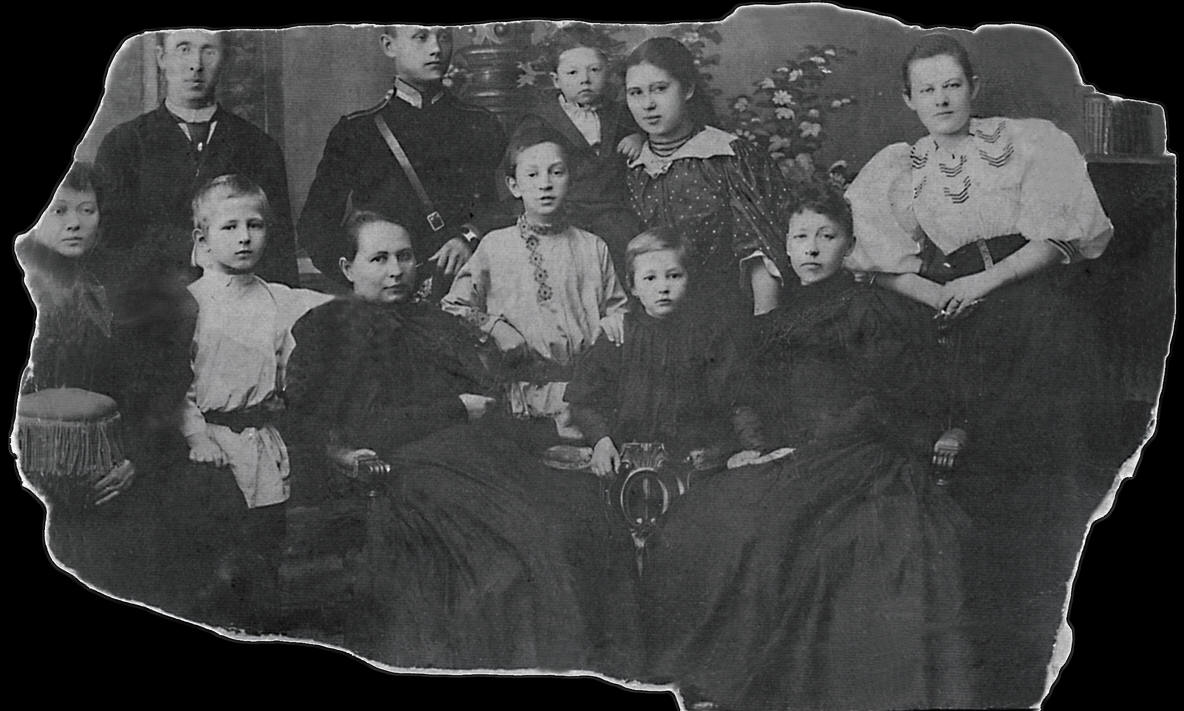National Biography Award nomination
St Petersburg tangle
[Excerpts]
|
|
|
The house where the Illins lived in St Petersburg, Courtesy of Alexander Massov |
... Neither Nikolai’s publications nor his work brought in enough to support their growing family and Alexandra did what was rarely done by married women of her social standing: she started her own business at their home — a fashionable sewing workshop with dress-making courses. But in spite of a constant shortage of money the family lived in style. Their last address in St Petersburg was Nikolaevskaia Street (now Marat Street), house 16, flat 39, not far from the central Nevsky Avenue. This was in a six-storey apartment building intended for middle-class residents. They employed a cook, housemaid, and nurse, a tutor for the children, an assistant for Alexandra’s courses and an assistant clerk for Nikolai. In summer they rented a five-room dacha (country-house) as well. Moreover, they paid for an English governess (rare enough even in well-off families) for their children and for violin lessons for Leandro...
...But, however many troubles the parents had, the children seemed to be happy. On Easter night 1912 Leandro, asleep on a dinghy off the northern coast of Australia, dreamed of those bygone days. A dream full of everlasting happiness.
‘I SAW MYSELF A LITTLE BOY, IN RUSSIA. My sister [Maria], brothers and our friends are going to church. Mother is advising us to be careful when coming out from church, as it is cold yet. The snow is still there. We all run downstairs, rushing to church to get a place as it will be all full up. ... While walking, the noise is horrible — everybody wants to say something, everybody laughs, but when in church, the noise is finished. We enter — everyone makes a serious face, but after a few minutes everyone is busy. Brother John [Ivan] goes to sing. The boys are talking to the girls. One of my brothers is trying to make me believe he can hypnotise anybody at all by looking at the back of his or her head and making him look back. ... But I hear the chorus and the priest singing ‘Christ Resurrected!’ ... There starts a great movement in the church. Everybody starts kissing one another. The clergymen come out on to the street to consecrate the Easter eggs etc. The bells are ringing quickly and I hear the artillery gun [firing] to announce to everybody the great joy of God’s Resurrection...
‘I dreamed I was at home in our big dining room. The samovar is on the table, heaps of painted eggs, Easter cakes and the paskha (this is made out of very fresh cheese cooked with all sorts of sweets in it. This must be on every table during Easter.). Father and Mother met us at the door and gave us the traditional kisses. We kiss one another, exchange eggs. When my turn came Father and Mother gave me a porcelain egg — swan — I went for a dish with water to put it [in] to swim ...’
|
|
|
The Illin family in St Petersburg, early 1890s. Leandro (centre in white shirt) with his siblings, mother (on the left) and relatives. Courtesy of Leandro Illin, Jr. (USA) |
***
This might seem like a traditional, Russian, happy family, but it was not. In Central Asia Nikolai’s misadventures had been, in spite of their seriousness, coloured with the excitement of frontier life and with his and Alexandra’s romance, but now in St Petersburg all was different. The devilish city full of social contrasts, described by Pushkin and Gogol, Dostoevsky and Nekrasov, stretched its web over Nikolai. The tangle began to grow by 1890.
This Petersburg tangle would hold him in its grasp for nearly three years more. In Nikolai’s life this seems to be the most mysterious period, its culmination determining the years to come. There is a lot of contradictory material about this period: Nikolai’s book The Tolstoyan Diary, his and Alexandra’s letters, his poetry, stories remembered by their children and grandchildren, and, finally, remarks his contemporaries made about Nikolai. Nonetheless, these diverse materials do not allow me to tell with confidence what the truth is. And, symbolically, the starting-point for this period was Nikolai’s encounter with the painting What Is Truth?...
|
|
|
Nikolai Ge, 'What Is Truth?' |


